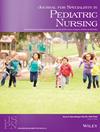Pain assessment from Swedish nurses' perspective
Abstract
Methods
This study is a qualitative interview study. The authors used the stimulated recall interview (SRI) with nurses working at a children's hospital in southern Sweden for the data collection. In total twelve nurses were interviewed and qualitative content analysis was used for the data analysis.
Results
The results are presented as one theme: Need for higher competencies and evidence, and three categories: Routines can enable pain assessment, Trusting one's own assessment of the whole picture, and Pain assessment scales as an extra workload. The interviewed nurses acknowledged that pain assessment tools are a vital part of the field of pain treatment. They also had trust issues with measuring and estimating pain by means of a tool such as pain scale. Furthermore, their opinion was that too many different tools and methods add up towards a more blurry and stress-related environment and due to a lack of consistent routines, pain assessment is seen as a work-related burden in the daily routines.
Conclusion
Results from the present study indicated that nurses need clear routines in combination with continued education regarding pain assessment with pain scales, which might be the key to successful pediatric pain assessment and thus to better pain management within pediatrics.

 求助内容:
求助内容: 应助结果提醒方式:
应助结果提醒方式:


